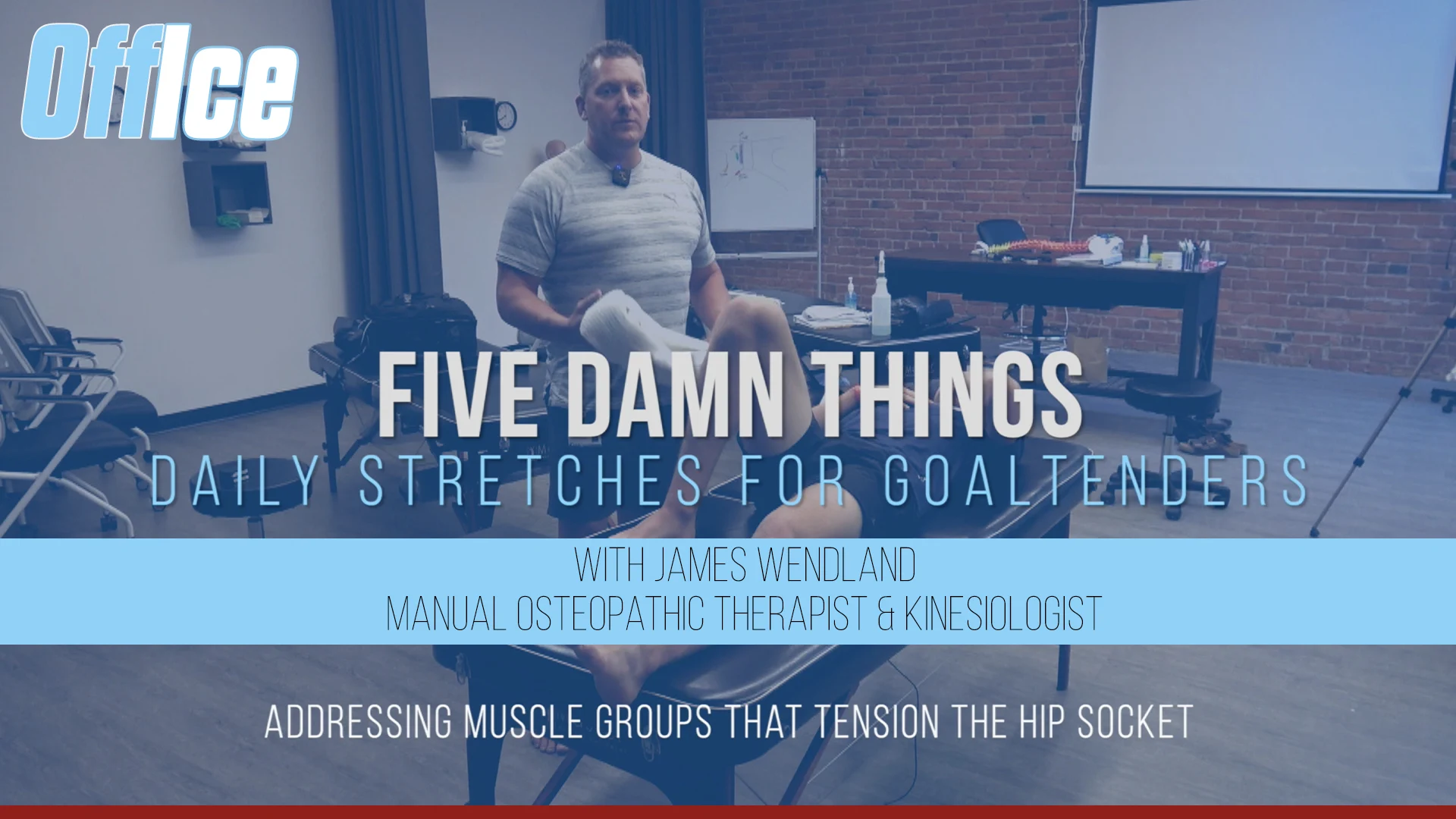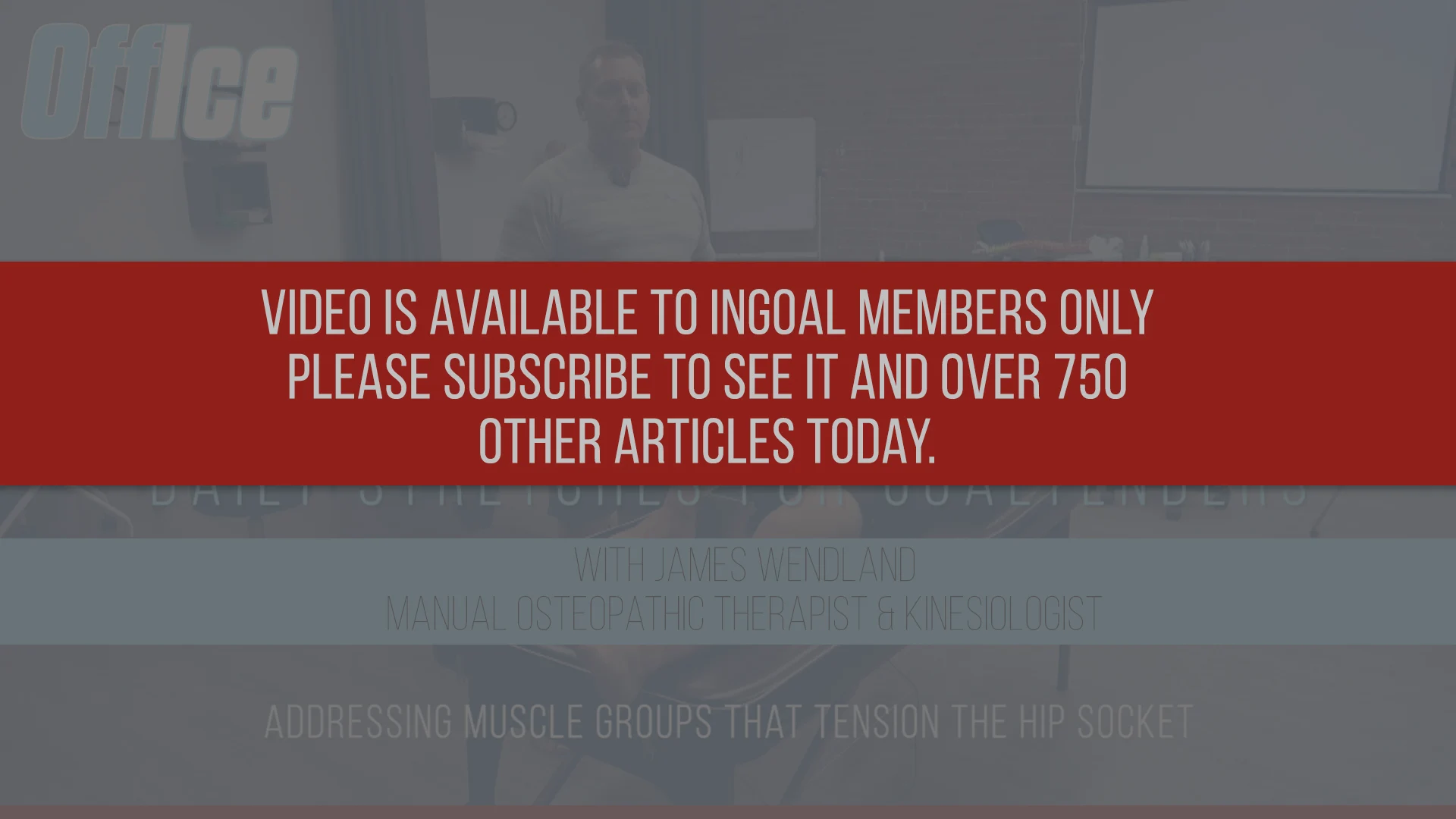
5 Damn Things to Improve Goalie Hip Health
James Wendland is a manual osteopathic therapist and kinesiologist with a master’s degree in exercise/respiratory physiology, a bachelor’s degree in human kinetics/kinesiology, a diploma in manual osteopathy and a strong focus on how the body works and commitment to making it work better.
Wendland has over 20 years of experience working with elite athletes in several sports, currently teaches human kinetics and kinesiology at universities and colleges in British Columbia, and also runs his own gym and clinic in Kelowna, where the client list includes James Reimer and Kristen Campbell.
“Working with James has been a total game changer for me. My body has never felt better! Our weekly sessions ensure my body is in alignment and my tissues/ joints are working optimally so I can perform on and off the ice. He is incredibly knowledgeable and I have learned so much about how I can personally enhance my recovery strategies off the ice. He has added various exercises into my routine to help me address my weaknesses. I have never seen the direct effects of a treatment translate to the ice before meeting James.”
So, when InGoal witnessed Wendland quickly and dramatically improve the functional range of hip motion for the goalies he works with, we wanted to share some of his secrets, and he was happy to oblige by walking us through five exercises designed to increase the internal rotation that goalies create and rely on every time they drop into, or move from, the butterfly.
Wendland called this quick-and-easy series of exercises “5 Damn Things,” adding the emphasis because it’s important for goalies to do them regularly to maintain good hip health.
“James has really helped keep my hips in line, which is integral for a goalie. His quick hip reset has really helped me perform at a high level on and off the ice.”
“Daily. Before ice. Nightly. The neutral sacrum/pelvis takes regular work multiples times a day as the sport and demands of goaltending causes so much anterior tension. It’s a must do. Daily. Repeatedly,” Wendland said. “5 damn things are designed to address the muscle groups that tension the hip socket, thus preventing the ability to internally rotate. When the glutes and hamstrings are tight, they suck the head of the femur superior and posterior into the acetabulum. The piriformis kicks in and then pushes the head of the femur into the anterior surface of the acetabulum. This means zero internal rotation, zero comfort in butterfly, and massive risk of impaction for the hip socket leading to pincer/cam lesions and labral issues.”
This five-exercise series is designed to be done bilaterally, meaning do all five on one side in order before switching to focus on the other side. All you need is a towel and yoga block.

Become a Member to Read the Full Article
We're working hard to bring you the best exclusive goaltending content whether you play goal, you are a coach, a parent of a goaltender, or a fan of the greatest position in sports.
Learn what you get as an InGoal Subscriber for less than $1 a week.
Already a member?
Comments
Let's talk goaltending!
We welcome your contribution to the comments on this and all articles at InGoal. We ask that you keep it positive and appropriate for all - this is a community of goaltenders and we're here for each other! See our comment policy for more information.




Good stuff. Quick and easy.
You learn something new every day. Can’t wait to try it.
Wow! Tried these exercises this week, and I noticed an improvement immediately. Thanks so much!
Just did these stretches. Amazing! Thanks for posting this!!!
I threw out my back earlier this year, and part of my work was on the piriformis. I will take this into the stretches I do in the morning, as the basic stretches have helped me get flexibility back in my game (and the corrective exercises have strengthened the flexibility).
Great stuff!
I can’t believe the difference I feel in my hips after only one session. Looking forward to more “5 Damn” articles.
The first 3 movements, you seem to say to push against the stretch and create a slight resistance if I understood well. How does this differ from the PNF approach?
From James,
Richard: You’re right there are similarities but PNF is more, completed at the anatomical barrier, more forceful, and a Therapist pushes back against resistance. Greater than 30% effort.
Muscle Energy Technique is at the feather barrier. First sign of CNS involvement. Before we trigger the muscle spindle. Effort is ideally 10% to a maximum of 20% joints/muscle is cycled each time. Held for 10 sec. Repeated 3 to 5 times.
Is there a minimum age for goalies to do these exercises? I am almost 40, been diagnosed with an FAI Pincer, and want to pass this information on to goalies I coach. Thank you!
From James,
Roger: Safe for all ages!
The pincer lesion comes from impaction in the joint. This is due to the tension of muscles around the hip socket drawing the head of the femur in deep and preventing free articulation. It’s not the butterfly. The focus on the movement of butterfly as a cause is the cart before the horse.